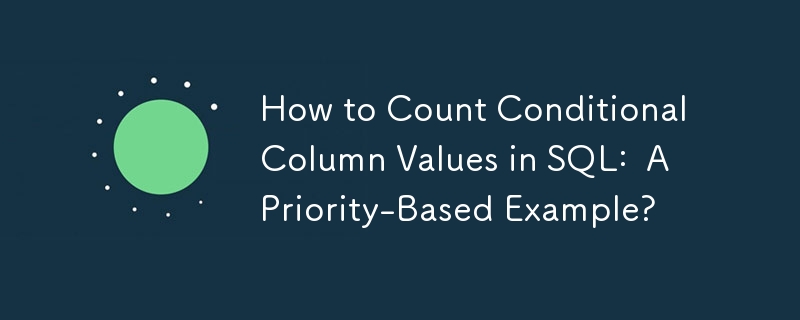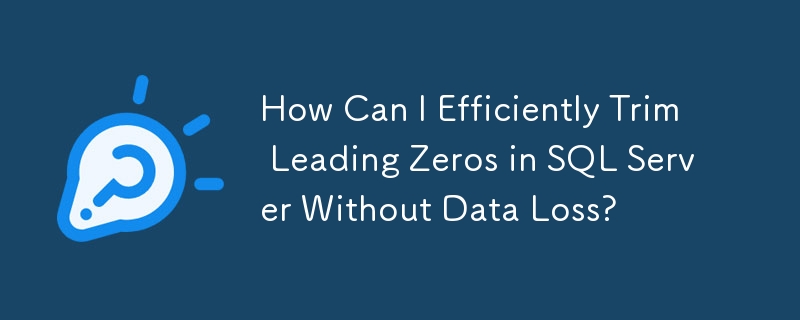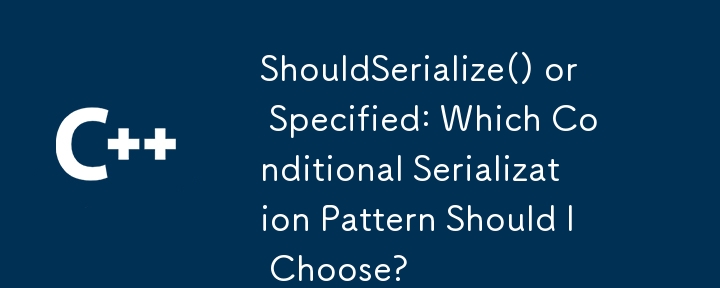Found a total of 10000 related content
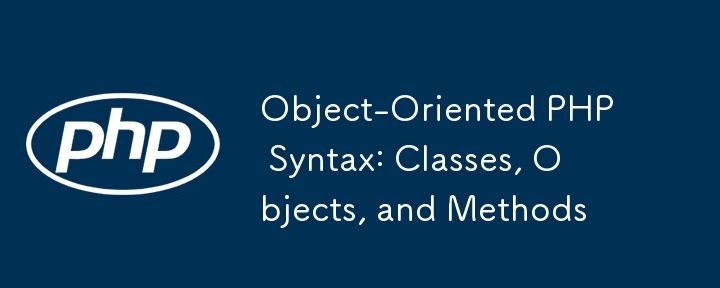
Object-Oriented PHP Syntax: Classes, Objects, and Methods
Article Introduction:Classes and objects in PHP realize code organization and reuse through encapsulation, methods and access control. Define the class to use the class keyword, which contains attributes and methods, such as classCar{private$color; publicfunctionsetColor($newColor){$this->color=$newColor;}}; create objects to use the new keyword, such as $myCar=newCar(); access attributes and methods through the -> operator; public, protected, and private control access permissions to implement data encapsulation; the constructor __construct() is used for initialization
2025-07-16
comment 0
257

Exploring Java Reflection API Capabilities
Article Introduction:The Java reflection API is a tool for dynamically obtaining class information and operating class members when a program runs. The core answer is: it allows the runtime to load classes, access private members, create instances and call methods. 1. The class can be loaded dynamically through Class.forName(); 2. Use getDeclaredConstructor().newInstance() or setAccessible(true); 3. Call methods through getMethod() and invoke(); 4. Support obtaining structural information such as methods, fields, constructors of the class; 5. You can access private members but use them with caution; 6. Pay attention to performance overhead, security restrictions, and encapsulation corruption when using them
2025-07-04
comment 0
922
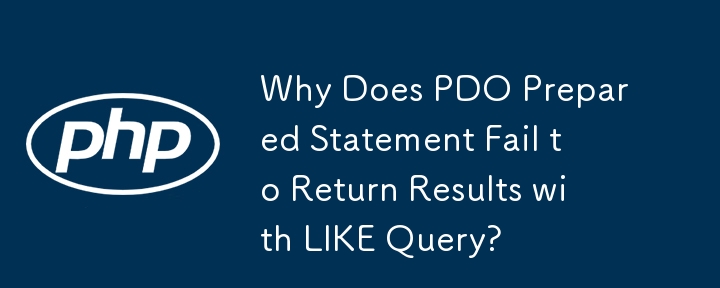
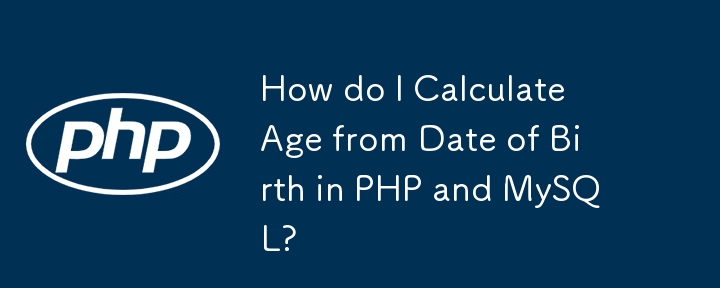
How do I Calculate Age from Date of Birth in PHP and MySQL?
Article Introduction:This article discusses two methods for determining the age of an individual based on their date of birth using PHP and MySQL. The PHP method employs the DateTime class to compute the age difference. The MySQL method utilizes the TIMESTAMPDIFF() funct
2024-10-24
comment 0
398
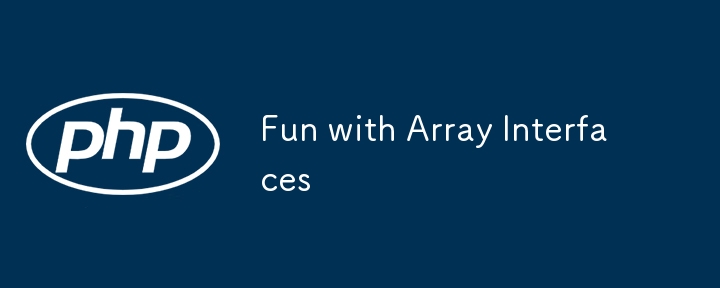
Fun with Array Interfaces
Article Introduction:Key Points
PHP's array interface allows programmers to simulate the characteristics of native data types in custom classes, similar to Python's methods. This enables custom classes to work like arrays and allows common array operations such as counting elements, looping through elements, and accessing elements through indexes.
An interface is like a contract for a class, specifying the methods that a class must contain. They allow encapsulation of implementation details and provide syntax sugar, thereby improving the readability and maintainability of the code. PHP provides a library of predefined interfaces that can implement these interfaces to make objects similar to arrays.
Countable, ArrayAccess and Iterator interfaces in PHP allow objects to pass cou respectively
2025-02-22
comment 0
532
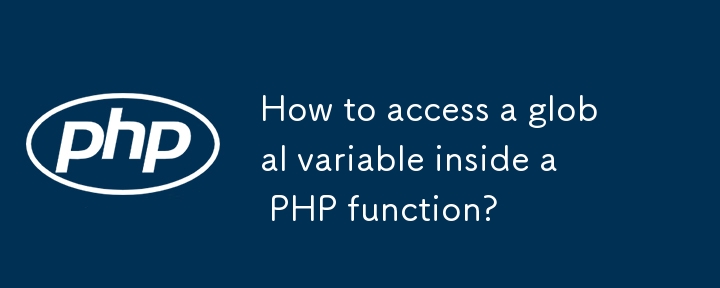
How to access a global variable inside a PHP function?
Article Introduction:To access global variables in PHP, you need to use the global keyword or $GLOBALS array. Use the global keyword to declare global variables in a function, such as: global$var;, which is suitable for situations where there are fewer variables, which have intuitive advantages but are prone to pollution; while the $GLOBALS array is directly accessed through $GLOBALS['var'], without declaration, suitable for multivariables but poor readability. It is recommended to avoid abuse of global variables to reduce maintenance difficulties and pay attention to naming conflicts. It is recommended to replace them with parameter passing or class encapsulation.
2025-07-15
comment 0
349
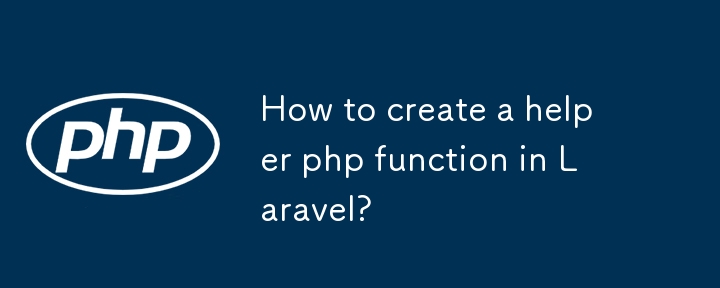
How to create a helper php function in Laravel?
Article Introduction:There are three common ways to create auxiliary PHP functions in Laravel. 1. Use helpers.php file: Create Helpers.php in the app/ directory, write the function, add a path in the autoload.files of composer.json and run composerdump-autoload to implement global calls; 2. Use macroable features: add custom methods to existing Laravel classes such as Collection through the macro() method, which conforms to the framework design style; 3. Create service classes: suitable for complex logic, such as creating HelperService class encapsulation methods and through dependency injection or app
2025-07-22
comment 0
410
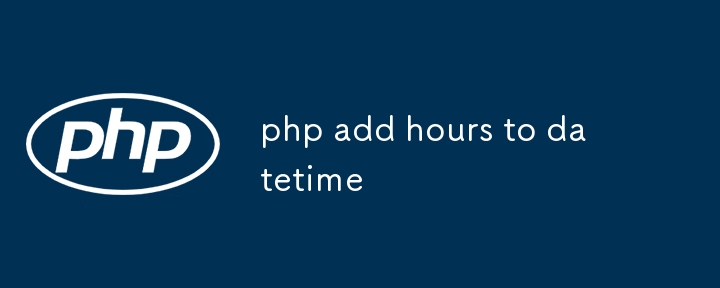
php add hours to datetime
Article Introduction:In PHP, you can add hours to date and time by using the DateTime class with the modify() or add() method. Use the modify() method to pass in string parameters similar to '3hours' to directly modify the original object, which is suitable for simple adjustment; if you do not want to change the original object, you need to clone it before operating; use the add() method, you need to cooperate with the DateInterval object, such as 'PT2H', which means adding two hours, which is more suitable for structured development; when processing time zones, DateTimeZone should be set to ensure accuracy; for old versions of PHP, you can use strtotime() to implement it, but it is not recommended for complex logic. Choosing the right method to keep the code clear is key.
2025-07-08
comment 0
672
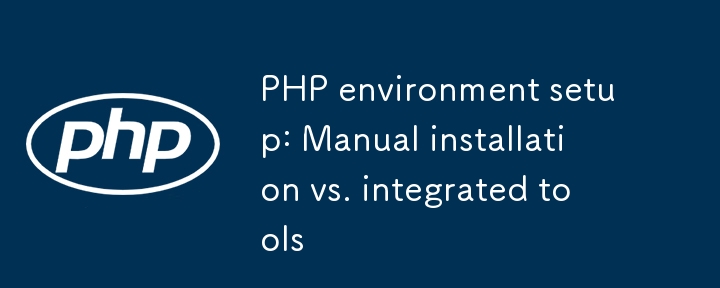
PHP environment setup: Manual installation vs. integrated tools
Article Introduction:Newbie people are suitable for using integrated tools. Developers who have customization needs or want to have a deep understanding of the operating mechanism are more suitable for manual installation. Integrated tools (such as XAMPP, WAMP, MAMP or Laragon) package Apache, MySQL, PHP and other components, which are simple to install, convenient to start and stop services, and have adjusted the environment configuration, which is suitable for quick start and save time; while manual installation is suitable for situations where specific versions are required, expansion modules are enabled or customized configurations are enabled. Although there are many steps, you can fully control the details. The choice method must consider the purpose (learning basic development or project customization), the operating system (Laragon or XAMPP recommended by Windows, MAMP or Homebrew can be selected by Mac), and technical capabilities (if you are not familiar with the command line, you will first
2025-06-29
comment 0
291

How to use collections in Laravel?
Article Introduction:Laravel collection is an advanced encapsulation of PHP arrays, providing chained calling methods to process data. It is implemented through the Illuminate\Support\Collection class, simplifying filtering, mapping, sorting and other operations. For example, filtering users older than 25 and sorting by name requires only one line of code. Common uses include: 1. Create a collection through collect() function or model query; 2. Use map(), filter(), pluck() and other methods to process data; 3. Support chain calls to improve code readability; 4. Pay attention to collection immutability, return value type and how to use it in Blade templates. Mastering these techniques can significantly improve development efficiency.
2025-07-24
comment 0
741

How to configure the PHP runtime environment?
Article Introduction:The key to configuring the PHP operating environment is to select the appropriate version, match the web server and set the environment variables correctly. 1. Install PHP to select a stable version such as 8.1 or 8.2, and install common extensions such as php-mysql, php-curl, php-gd. Windows users need to manually modify the php.ini file to enable the extension, and Linux users generally enable it automatically; 2. Apache or Nginx can be selected with a web server. Apache needs to load the PHP module in the configuration file and specify PHPIniDir. Nginx uses PHP-FPM through FastCGI. Pay attention to the root and index.php settings. XAMP is available for local testing.
2025-06-29
comment 0
386

How to get datetime aggregated data by user time zone in MySQL and PHP
Article Introduction:This article elaborates on strategies for handling multi-time zone date-time aggregation in MySQL databases and PHP applications. By explaining MySQL's CONVERT_TZ function and its dependence on time zone system tables, as well as the powerful time zone conversion capabilities provided by the PHP DateTime class, this tutorial aims to guide developers how to accurately filter, group and aggregate data based on the user-specified time zone, thereby avoiding calculation errors caused by time zone differences.
2025-08-24
comment 0
649
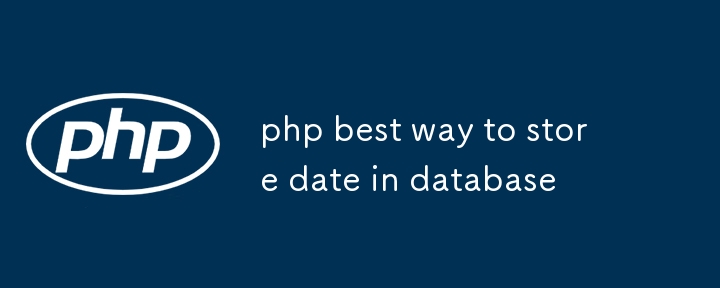
php best way to store date in database
Article Introduction:The safest way to save dates to the database in PHP is: 1. Select the appropriate data type (DATETIME is suitable for long-term storage, TIMESTAMP is suitable for automatic time zone conversion); 2. Use the DateTime class to process time and the unified format is 'Y-m-dH:i:s'; 3. Use UTC in the unified time zone and set the time zone when connecting to MySQL. Avoid storing timestamps directly or using irregular formats to ensure queries, sorting, and cross-language compatibility.
2025-07-12
comment 0
279
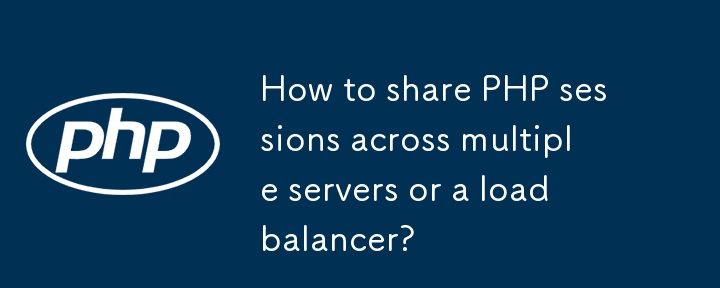
How to share PHP sessions across multiple servers or a load balancer?
Article Introduction:Using centralized storage to solve the Session sharing problem under PHP load balancing is to change local file storage to unified storage. 1. Use Redis or Memcached as centralized storage, modify the php.ini configuration session.save_handler and session.save_path to point to the Redis or Memcached instance to ensure that all servers read and write the same data; 2. Store the Session into MySQL or PostgreSQL through the custom SessionHandler class, which is suitable for existing databases. You need to implement read, write, destroy and other methods and call session_
2025-07-18
comment 0
444


Dave The Diver: How To Catch Spider Crabs
Article Introduction:In Dave The Diver, there are some creatures that are not easy to catch. Or, catch alive that is. The spider crab is one of those very species, making it seem like the only way to bring these crustaceans back up to land is to viciously crack them up w
2025-01-10
comment 0
909
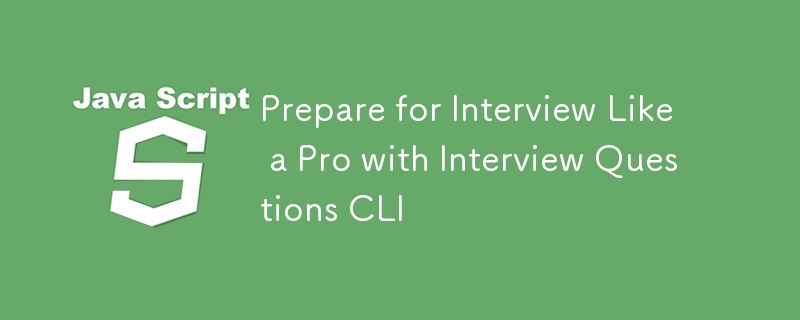
Prepare for Interview Like a Pro with Interview Questions CLI
Article Introduction:Prepare for Interview Like a Pro with Interview Questions CLI
What is the Interview Questions CLI?
The Interview Questions CLI is a command-line tool designed for JavaScript learners and developers who want to enhance their interview
2025-01-10
comment 0
1524
















